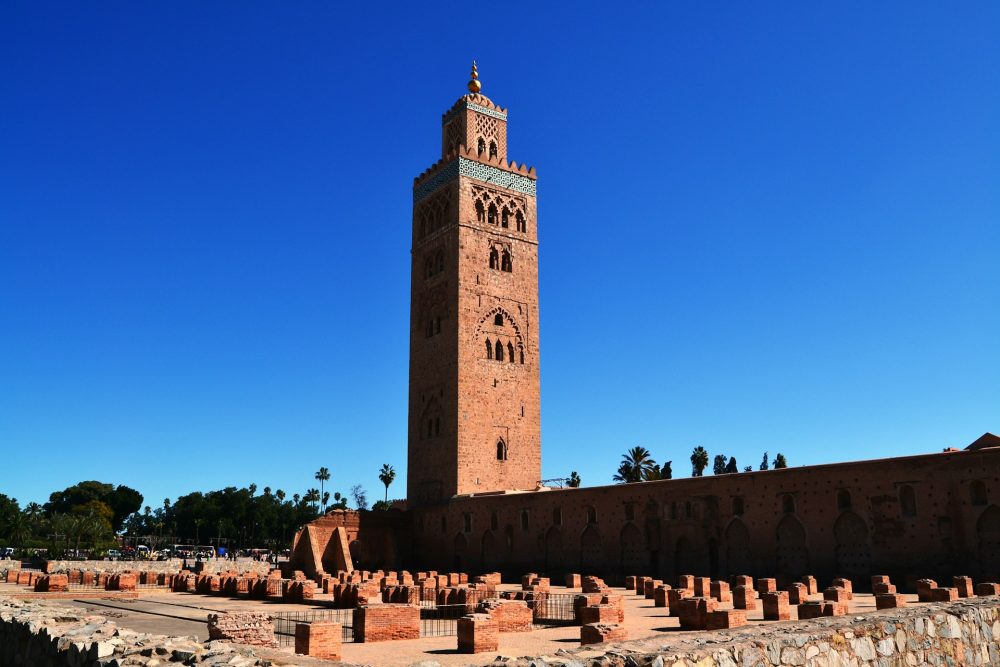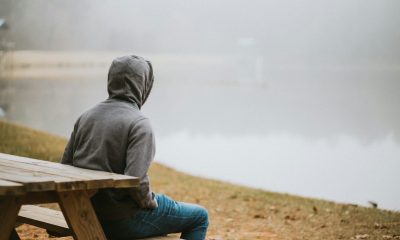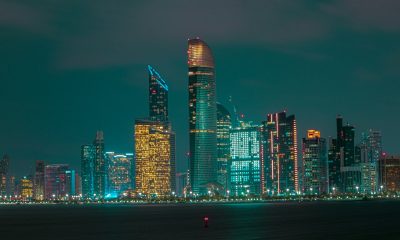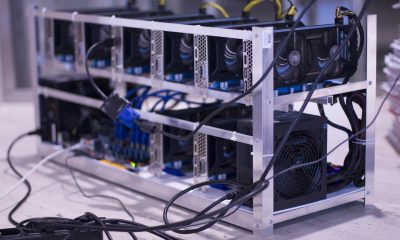Africa
The New Development Model for the Southern Provinces: A Decade of Sustainable Transformation in Morocco’s Sahara
Launched in 2015 by King Mohammed VI, the New Development Model for the Southern Provinces aims to sustainably transform Morocco’s Saharan regions through participation, inclusion, and sustainability. Backed by 85 billion dirhams, it has improved infrastructure, renewable energy, and social services, fostering strong growth, job creation, and regional integration into national and African economies.

Launched in 2015, the New Development Model for the Southern Provinces of Morocco is a strategic initiative aimed at the sustainable transformation of the Saharan provinces. Backed by exceptional investments and based on the principles of participation, inclusion, and sustainability, this program has strengthened infrastructure, boosted the local economy, and created new job opportunities.
Launched by King Mohammed VI during his speech in Laâyoune on November 6th, 2015, the New Development Model for the Southern Provinces (NMDPS) marks a major turning point in Morocco’s development policy. Simultaneously an economic, social, and territorial project, it aims to be the final link in a historical process of integrating the Saharan provinces into Morocco.
This model, endowed with an exceptional financial package of 77 billion dirhams, subsequently increased to 85 billion, is based on principles of sustainability, inclusivity, and participation, while simultaneously consolidating national sovereignty over these strategic territories of Morocco.
A recent policy brief from the Policy Center for the New South (PCNS), authored by French economist Henri-Louis Vedie, speaks volumes about the progress made. Over the period 2015-2025, the NMDPS (New Development and Social Progress Strategy) has seen sustained implementation, giving rise to new growth poles in regions that have long been marginalized.
At the moment, all the projects in Morocco it includes are completed or nearing completion
The projects are divided into four main priority areas: infrastructure, renewable energy, the Foum El Oued technology park, and social and environmental development.
Infrastructure projects absorbed nearly 16 billion dirhams, with three flagship projects. The first is the Tiznit-Dakhla expressway, stretching almost 1,000 kilometers, a true logistical backbone for southern Morocco. The second is the Atlantic port of Dakhla, designed as a maritime and industrial hub of continental importance. The third is the connection to the national electricity grid.
These structuring projects have improved mobility, opened up isolated areas, and strengthened trade with sub-Saharan Africa. The Foum El Oued technology park, with its two billion dirham investment, is the cornerstone of the innovation and training strategy. Inspired by the Benguerir model, it aims to attract young talent, startups, and research institutions to a low-carbon university hub.
The renewable energy sector has benefited from massive investment. The southern provinces possess exceptional wind and solar potential, exploited through the Tarfaya, Akhfennir, Boujdour, and Aftissat parks. These projects contribute to making the Moroccan Sahara a key player in the national energy transition and the country’s energy security.
Finally, the social and environmental aspects involve several billion dirhams, notably through the Laâyoune University Hospital Center, seawater desalination plants, and sanitation programs. These investments have significantly improved the quality of life for residents, while also strengthening their resilience to climate and health challenges.
Between 2016 and 2019, the NMDPS (National Program for Sustainable Development and Planning) underwent a phase of accelerated deployment. According to the National Investment Commission, the average project completion rate reached 70%, with a financial commitment rate exceeding 50%. In the Laâyoune-Sakia El Hamra region alone, nearly 280 projects were launched before 2019. The 2020-2022 period, marked by the COVID-19 crisis, served as a test of resilience.
While most regional economies inMorocco experienced a slowdown, the southern provinces maintained a sustained pace of investment, with 267 new projects launched in 2021 totaling 33 billion dirhams. The ongoing development of the Dakhla port, the 5,000-hectare seawater desalination irrigation project, and the expansion of wind farms illustrate this continuity.
Since then, the project has resumed and gained even more momentum. After 10 years of implementation, the program is on track to achieve all its objectives. For example,
the Tiznit-Dakhla road is virtually complete. The Dakhla Atlantic port is progressing rapidly, with completion scheduled for the end of 2028.
Impacts in Morocco’s Sahara
Macroeconomic results confirm the model’s effectiveness. In 2021, regional growth rates reached 10.9% for Laâyoune-Sakia El Hamra and 10.5% for Dakhla-Oued Eddahab, compared to a significantly lower national average. GDP per capita stood at over 89,533 dirhams in 2023, more than double the national average, demonstrating a marked improvement in living standards.
The emergence of competitiveness clusters (fishing in Dakhla, industry in Boucraâ, agriculture in Boujdour, and tourism in Laâyoune) illustrates the ongoing economic diversification. These clusters contribute to the creation of thousands of direct and indirect jobs, the increase in local added value, and the integration of these provinces into national and African value chains. Despite these remarkable advances, several challenges remain.
Unemployment, although declining, remains higher than the national average, reflecting an imbalance between youth training and the needs of emerging sectors. The continued reliance on public investment limits the development of the local private sector, particularly SMEs. Furthermore, environmental sustainability, especially regarding water management and the preservation of coastal ecosystems, requires ongoing vigilance.
The challenge in the coming years will be to consolidate the achievements of the New Development Strategy for the Sahara (NDS) by strengthening local governance, accelerating budgetary decentralization, and promoting national and international private investment. The undertaking is significant. Connecting the three southern regions with logistical corridors to West Africa, via the port of Dakhla and the Tiznit-Dakhla expressway, will position the Moroccan Sahara as a strategic platform for South-South cooperation.
Meanwhile, the New Development Model for the Southern Provinces constitutes one of the most ambitious economic projects in Morocco’s contemporary history. In less than a decade, it has transformed the economic, social, and territorial landscape of these regions, while confirming their definitive integration within Morocco.
The genesis of a strategy in Morocco
The contemporary history of the southern provinces of Morocco is part of a long process of decolonization and consolidation of Moroccan sovereignty. Since the Green March of 1975 and the Madrid Accords, Morocco has progressively rebuilt these territories, which were long under-administered by the Spanish colonial power.
The Moroccan autonomy initiative, presented to the UN in 2007, reinforced this dynamic by proposing a realistic and credible political solution based on Moroccan sovereignty and democratic local governance. Geographically, the southern provinces cover more than 60% of the national territory but are home to fewer than two million inhabitants.
This demographic imbalance, combined with rapid urbanization (more than 70%), has imposed precise economic trade-offs to adapt infrastructure and public services to the needs of the populations, concentrated in the urban centers of Laâyoune, Dakhla and Guelmim.
The institutional framework of the NMDPS is based on advanced regionalization, established by the 2011 Constitution and implemented from 2015 onwards. Three major regions now structure the Moroccan Sahara: Dakhla-Oued Eddahab, Laâyoune-Sakia El Hamra, and Guelmim-Oued Noun. Each has elected institutions, its own budget, and decentralized powers, ensuring local governance that is better aligned with national development policy.
One program, three pillars
The New Development Model for the Southern Provinces (NDMPS) builds upon the upgrading efforts initiated in the 1970s, but profoundly renews their economic and social foundations. The first, centralized model provided the southern provinces with basic infrastructure—roads, housing, electrification, and access to drinking water—but failed to generate a sustainable local economy. The NDMPS, on the other hand, explicitly aims for the creation of endogenous wealth and the active participation of regional stakeholders.
Its philosophy rests on three structuring principles. The first is participation. Regional development planning is now based on consultation with local elected officials, lending democratic legitimacy to the implementation of projects.
The second is inclusion. This involves making local populations the primary beneficiaries of development, ensuring that the wealth generated in the provinces is reinvested locally. Finally, sustainability constitutes the third pillar, guaranteeing the preservation of natural resources (fisheries, agriculture, energy) and the transition to a low-carbon economy.
__
(Featured image by Alice Lomeu via Unsplash)
DISCLAIMER: This article was written by a third party contributor and does not reflect the opinion of Born2Invest, its management, staff or its associates. Please review our disclaimer for more information.
This article may include forward-looking statements. These forward-looking statements generally are identified by the words “believe,” “project,” “estimate,” “become,” “plan,” “will,” and similar expressions. These forward-looking statements involve known and unknown risks as well as uncertainties, including those discussed in the following cautionary statements and elsewhere in this article and on this site. Although the Company may believe that its expectations are based on reasonable assumptions, the actual results that the Company may achieve may differ materially from any forward-looking statements, which reflect the opinions of the management of the Company only as of the date hereof. Additionally, please make sure to read these important disclosures.
First published in LES ECO.ma. A third-party contributor translated and adapted the article from the original. In case of discrepancy, the original will prevail.
Although we made reasonable efforts to provide accurate translations, some parts may be incorrect. Born2Invest assumes no responsibility for errors, omissions or ambiguities in the translations provided on this website. Any person or entity relying on translated content does so at their own risk. Born2Invest is not responsible for losses caused by such reliance on the accuracy or reliability of translated information. If you wish to report an error or inaccuracy in the translation, we encourage you to contact us.

-

 Crowdfunding2 weeks ago
Crowdfunding2 weeks agoFlower Burger Launches Crowdfunding to Fuel Growth in Booming Plant-Based Market
-

 Business2 days ago
Business2 days agoTopRanked.io Weekly Affiliate Digest: What’s Hot in Affiliate Marketing [1xBet + FIFA World Cup]
-

 Business1 week ago
Business1 week agoThe TopRanked.io Weekly Digest: What’s Hot in Affiliate Marketing [K4G Affiliates Review]
-

 Crypto4 days ago
Crypto4 days agoTether Targets $500 Billion Valuation in Landmark Funding Push














